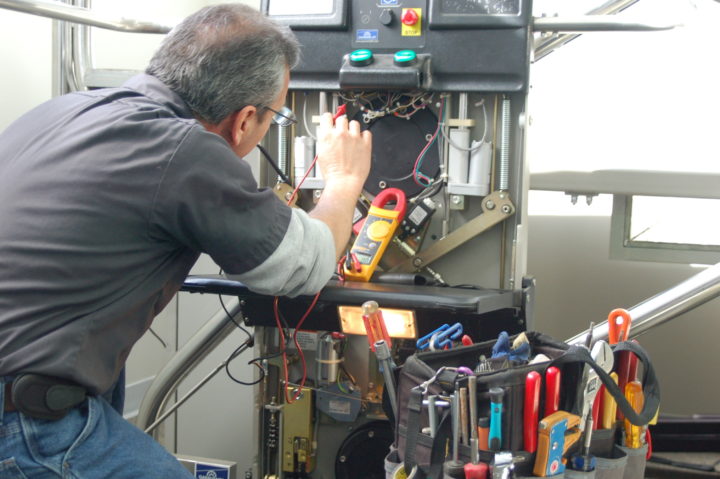Comprehending Platform Lift Capacities: Essential for Reliable Lift Service
An Extensive Strategy to Enhancing Efficiency With Strategic Lift Repair Approaches
In the realm of center monitoring, the efficiency and reliability of lifts play a crucial duty in making sure smooth procedures. A calculated and organized technique to raise repair work and upkeep is vital to make the most of performance and decrease downtime. By addressing typical lift concerns, carrying out aggressive maintenance steps, and establishing targeted repair service plans, facilities can enhance their lift systems to run at peak efficiency degrees. However, the secret to accomplishing continual improvement depends on making use of data-driven understandings to inform decision-making processes and drive continuous improvement. This thorough strategy to boosting lift efficiency with calculated repair approaches holds the assurance of not only enhancing functional efficiency but also expanding the lifespan of lift systems.
Value of Lift Efficiency Optimization
Recognizing the significance of optimizing lift performance is important for guaranteeing efficient and dependable vertical transport systems in different buildings and frameworks. Lifts are important components of modern-day facilities, providing upright mobility for occupants and goods within buildings of differing heights. By maximizing lift performance, structure proprietors and center managers can improve user experience, boost power efficiency, and rise general functional effectiveness.
Efficient lift performance optimization entails various aspects, including speed, capability, power safety, consumption, and maintenance needs. Correctly optimized lifts can lower wait times for users, particularly in high-traffic structures, bring about enhanced fulfillment and performance. Additionally, optimized lifts contribute to power savings by using sophisticated control systems and modern technologies that decrease power intake without compromising performance.

Identifying Common Lift Issues
Recognizing usual lift problems is necessary for preserving the operational performance and safety and security of upright transport systems in structures. This concern can be a sign of troubles with the lift's electric motor, control system, or even the placement of the lift car.
Another prevalent lift issue is odd sounds rising from the lift shaft or equipment area. These sounds can range from grinding or scratching audios to loud clunking sounds, every one of which may signify underlying mechanical problems that need instant interest. Additionally, regular door breakdowns, such as doors closed or closing correctly, can interrupt the smooth flow of passengers and posture safety dangers.
Carrying Out Positive Upkeep Steps
To enhance the efficiency and long life of lift systems, positive maintenance measures play an essential function in guaranteeing operational integrity and safety and security. lift repair. Carrying out proactive upkeep includes systematically checking, servicing, and fixing elements before they fall short, thus preventing pricey downtime and prospective safety threats. Routinely set up assessments can help recognize minor problems prior to they escalate right into major troubles, eventually prolonging the lifespan of lift systems
One secret aspect of positive upkeep is producing a comprehensive upkeep schedule based upon supplier referrals and industry ideal practices. This schedule ought to lay out tasks such as lubrication, alignment checks, and part replacements at defined periods. Additionally, carrying out problem surveillance techniques, such as resonance analysis and thermal imaging, can assist find very early indications of wear or malfunction.
In addition, training upkeep personnel on correct inspection methods and preventative upkeep treatments is necessary for the effective implementation of click here to read positive maintenance procedures. By cultivating a culture of aggressive maintenance within a company, lift systems can run at peak efficiency levels, lessening disturbances and ensuring the security of customers.
Establishing Targeted Repair Strategies
Upon examining the maintenance documents and performance information, the design group can develop targeted repair plans to attend to particular concerns and optimize lift system capability. These repair service plans are tailored to the recognized troubles, making certain that resources are concentrated on dealing with crucial concerns efficiently. By focusing on repair services based upon their influence on performance and safety, the targeted repair service strategies aid decrease downtime and upkeep costs while optimizing the lift system's dependability.
Creating these strategies entails an extensive evaluation of the lift system parts, consisting of motors, cords, brakes, and control systems. Via this comprehensive evaluation, the design team can determine the origin of any kind of malfunctions or degradation in efficiency. This info is then made use of to develop a roadmap for the repair work procedure, laying out the required steps, timeline, and resources required to deal with each problem properly.
Additionally, targeted fixing plans might include preventative procedures to enhance the lift system's long life and efficiency. By proactively addressing potential issues prior to they rise, these strategies contribute to the general effectiveness and security of the lift system.
Utilizing Data-Driven Insights
Utilizing the power of look here data-driven insights is critical in maximizing lift system efficiency and maintenance efficiency. These predictive upkeep approaches help prevent unanticipated breakdowns, lower downtime, and prolong the life expectancy of lift systems.

Conclusion
In final thought, enhancing lift efficiency is critical for guaranteeing efficiency and safety and security in structures. By recognizing usual lift issues, executing proactive maintenance steps, establishing targeted fixing strategies, and making use of data-driven understandings, companies can boost efficiency and decrease downtime. Visit Website It is vital to take a comprehensive approach to lift repair strategies to make best use of functional effectiveness and make sure the durability of lift systems.
By attending to typical lift issues, executing aggressive maintenance measures, and developing targeted repair service plans, centers can enhance their lift systems to run at peak efficiency levels.One more widespread lift problem is weird noises emanating from the lift shaft or equipment space.Upon assessing the maintenance documents and efficiency data, the engineering group can create targeted repair plans to maximize and resolve certain concerns lift system capability. By focusing on repair work based on their influence on performance and safety, the targeted fixing strategies help decrease downtime and upkeep costs while making best use of the lift system's integrity.
It is crucial to take a detailed approach to lift repair approaches to maximize operational effectiveness and guarantee the longevity of lift systems.